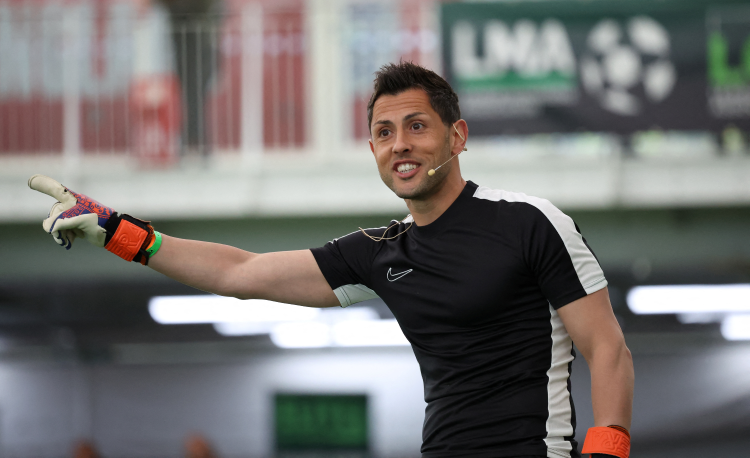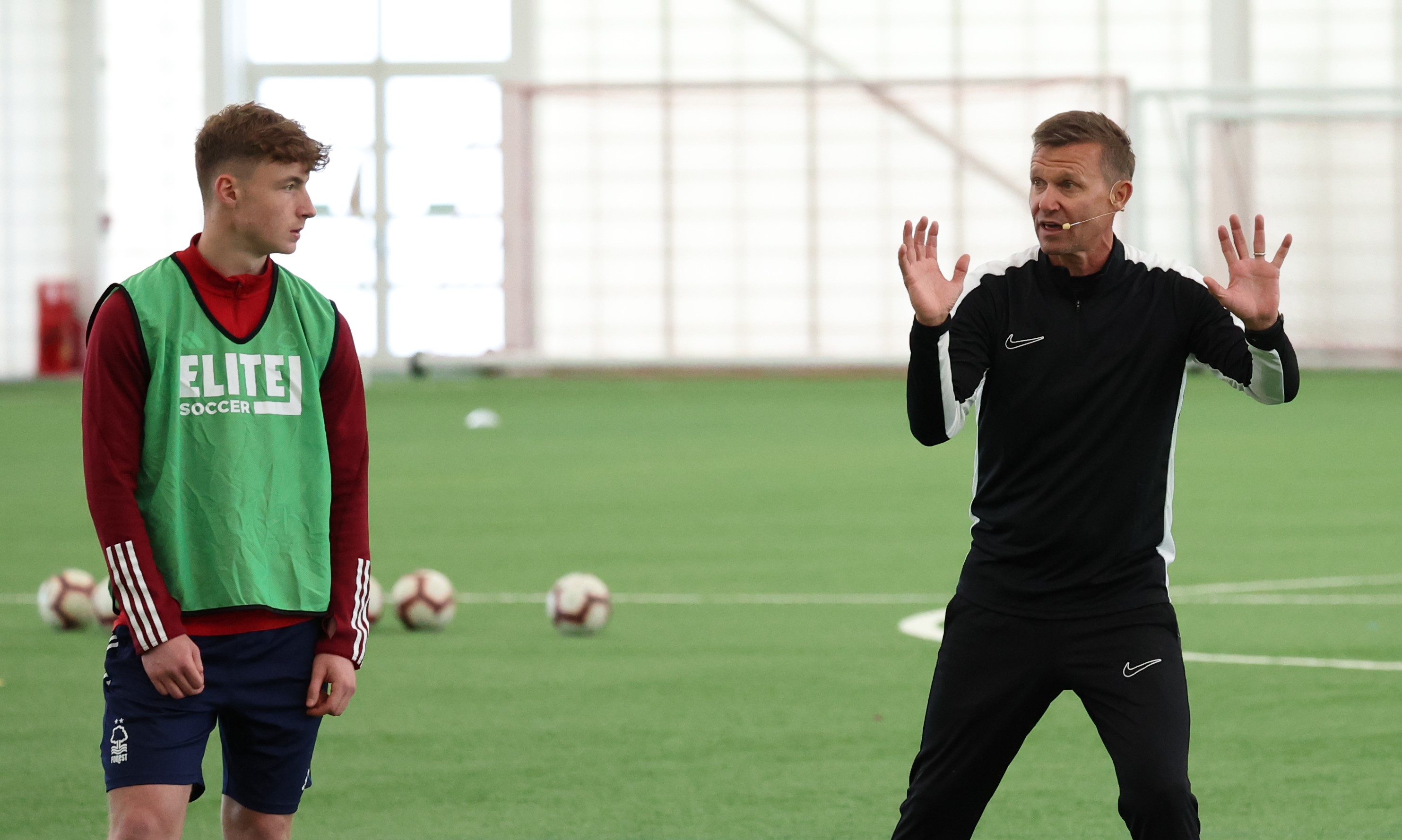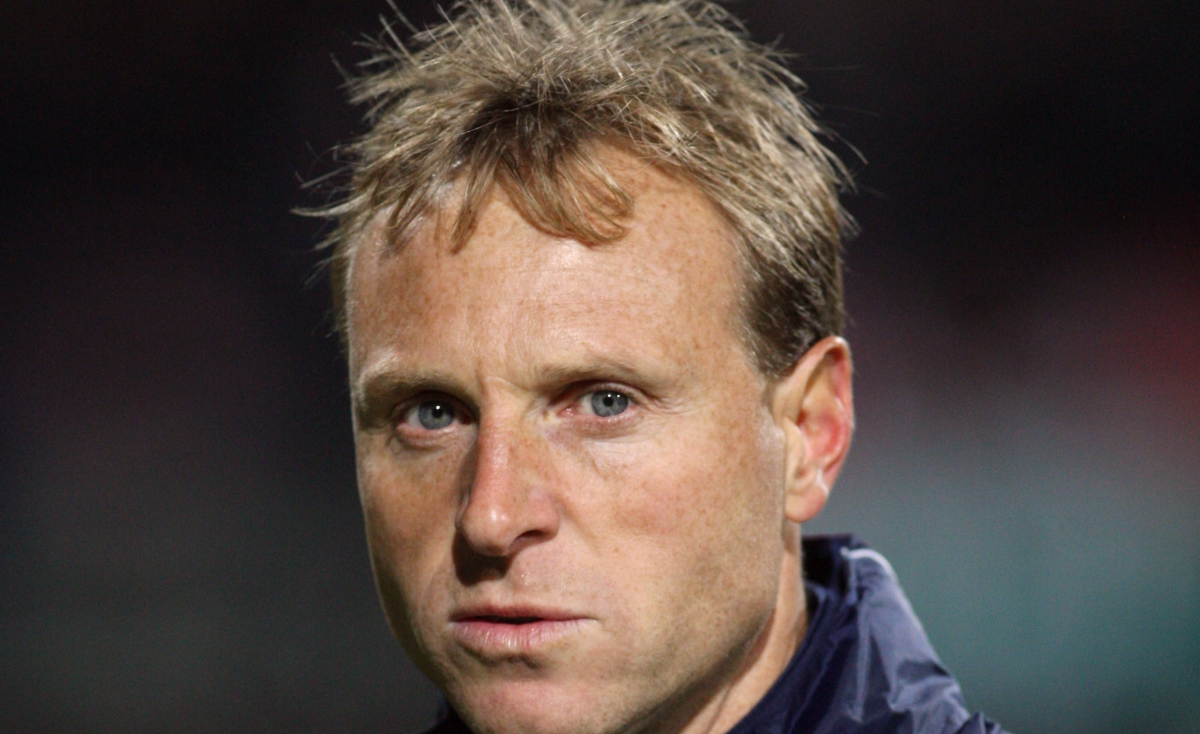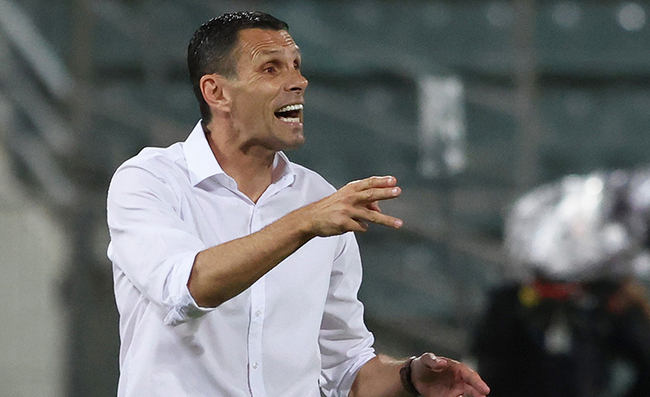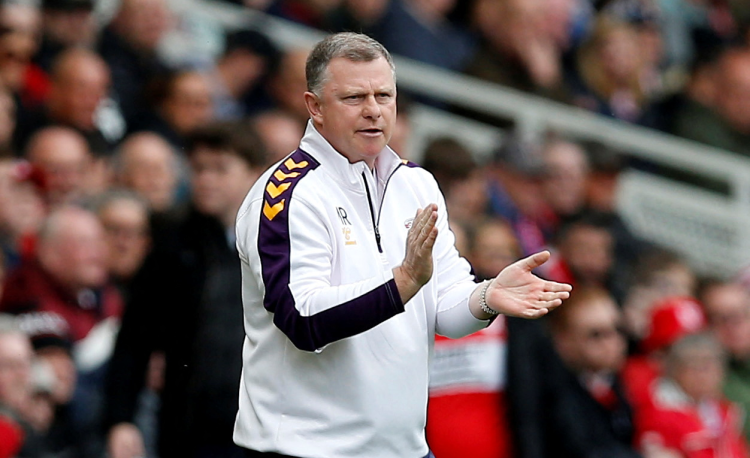




OUR BEST EVER OFFER - SAVE £100/$100
JOIN THE WORLD'S LEADING PROFESSIONAL DEVELOPMENT PROGRAMME
- 12 months membership of Elite Soccer
- Print copy of Elite Player & Coach Development
- Print copy of The Training Ground
You are viewing 1 of your 1 free articles
Flow the risk
This is a goal kick session leading on to the transition between attack and defence; it moves from some specific goalkeeping drills to a scenario with a whole team.
| Area | Full pitch |
| Equipment |
Cones, two full size goals |
| No. of Players | 8 players + 4 goalkeepers |
| Session Time | 35mins Rondo goalkeepers: 5mins Double goal game: 10mins Goal kick game: 14mins |
This is a goal kick session leading on to the transition between attack and defence; it moves from some specific goalkeeping drills to a scenario with a whole team.
This session helps the goalkeeper make decisions in a real context with real behaviours. This structure also allows coaches to take a different approach, working to eliminate the fear in the build-up, and accepting that if anyone loses the ball, we are prepared.
This session slots in to matchday -2 or matchday -3, where we adapt our game plan to break the opponent’s press. We can add some variations: technically, tactically, physically and cognitively. The idea is to develop an understanding of the game for the goalkeeper, dominating new scenarios in attack and defence, and being ready in close spaces to make challenges.
We want to create the right defensive behaviours, so goalkeepers need to be able to read the opponent’s moves so they can find the player in the best position to play forward.
“Coaches can work to eliminate the fear in the build-up”
RONDO GOALKEEPERS
Set up in a 4x4 yards space, with three goalkeepers on the outside of the circle and one in the middle. As in a standard rondo, the goalkeepers creating the circle must pass between themselves to retain possession.
Limit it to two touches maximum per keeper. The keeper in the middle must touch the ball to leave.
[1]

-
There are three goalkeepers on the outside of the circle and one in the middle
- The goalkeepers creating the circle must pass between themselves to retain possession. Two touches per keeper
- The keeper in the middle must touch the ball to leave
“The keeper in the middle must touch the ball to leave”
DOUBLE GOAL GAME
One keeper goes to the goal and moves to the goal kick position, looking to find a free player. Starting with the coach as centre back, play with the keeper, then with the other centre back. Find one of the midfielders to finish with the coach in the centre back position. Then the keeper in the goal starts a transition against two goalkeepers in the opposite goal. If they catch the ball transition with one of the centre backs (who have now moved out to the wing), pass back and finish with the keeper.
Depending on time, vary the combinations to find a different free player.
[2a]
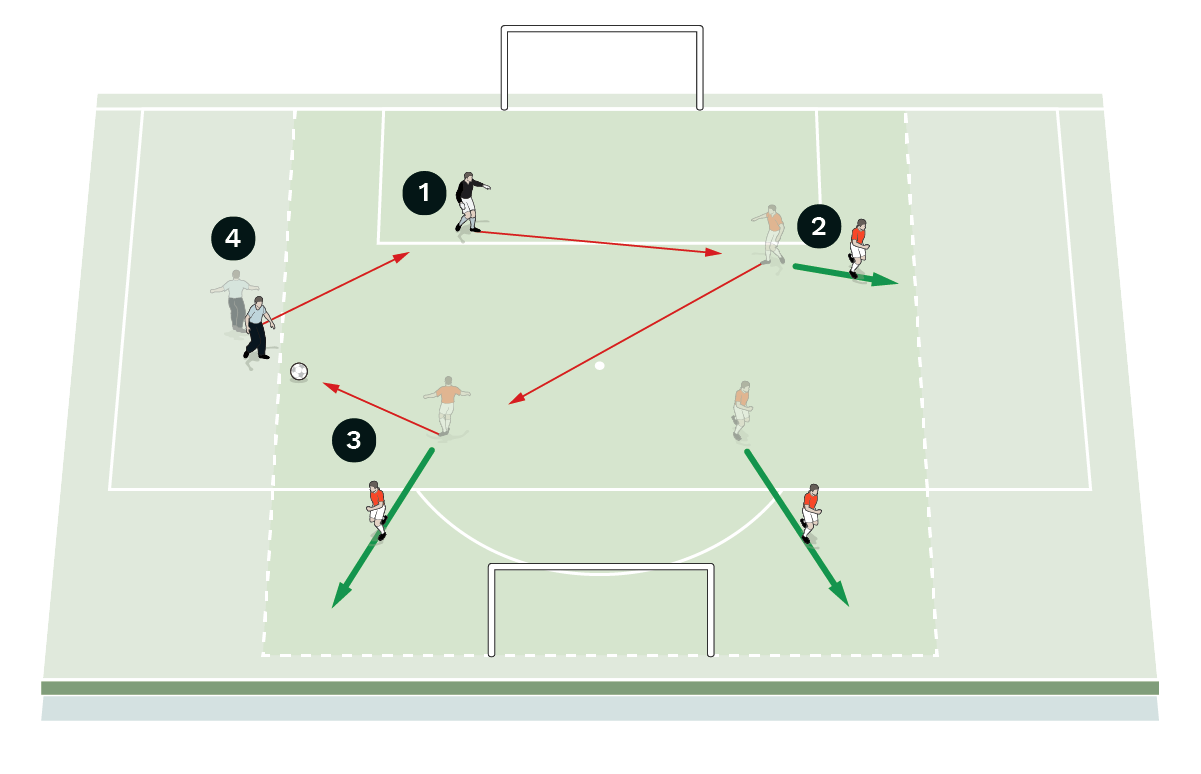
-
There is one goalkeeper in goal, with the coach operating as centre back
- The coach plays ball to keeper, who plays to the other centre back
- The centre back plays to one of the midfielders
- The midfielder plays it back to coach
[2b]

-
Two midfielders move in to the opposite goal, the centre back moves wide as goalkeeper starts a transition
- If the ball transition is captured, pass back to goalkeeper
“Vary the combinations to find a different free player”
GOAL KICK GAME
Here we have two normal goals, playing 4v4 plus two goalkeepers. We bring in the rule that each time the ball is out, the goalkeeper shapes to take a goal kick with opponents out of the box, then a different player comes in against them to generate a new free player. After taking the goal kick, the target is to score in the opposition’s goal. If the opponent that is trying to press manages to recover the ball, they have 15 seconds to score.
Each team will start in goal kick shape.
[3a]
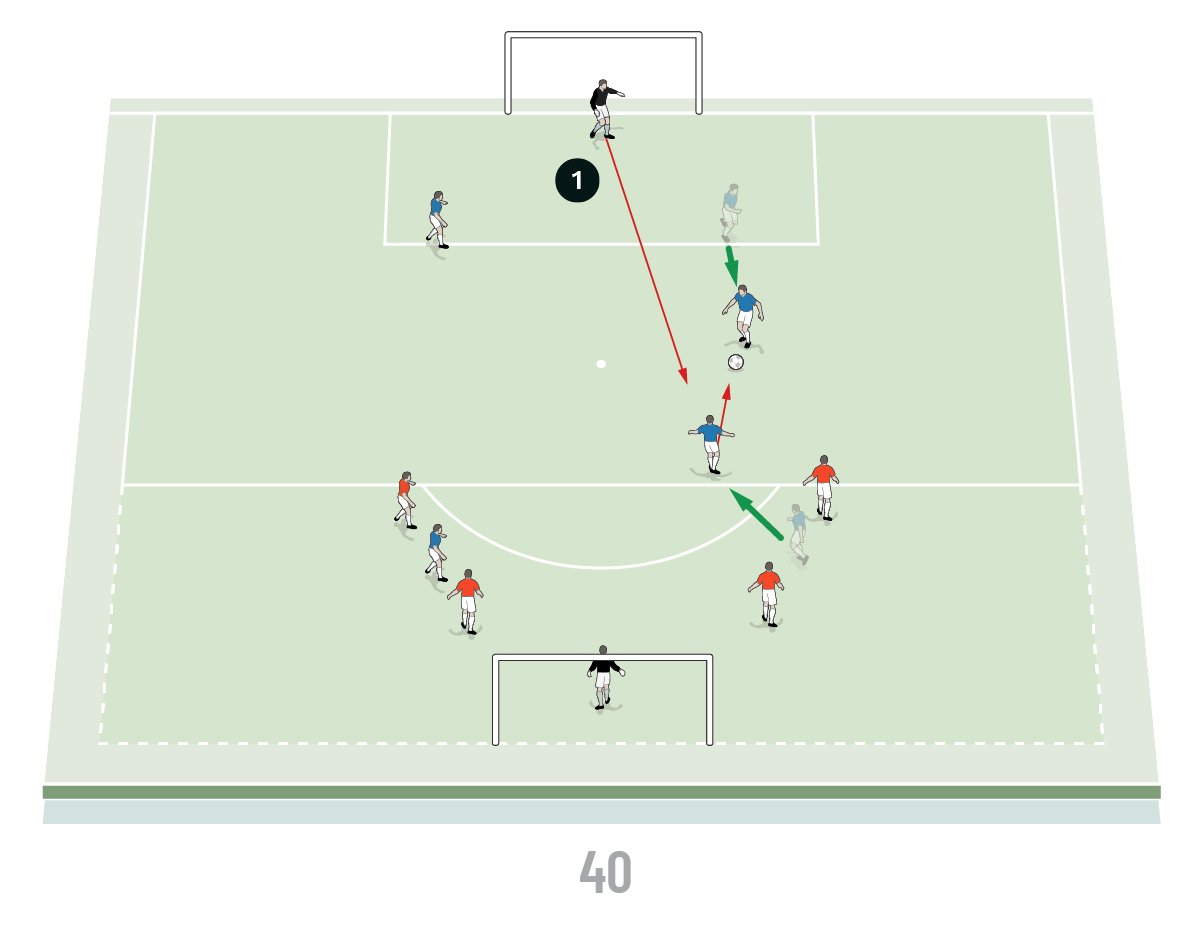
-
Goalkeeper takes a goal kick with all opponents out of the box
[3b]

-
The players should use free player at the goal kick to move into space
[3c]
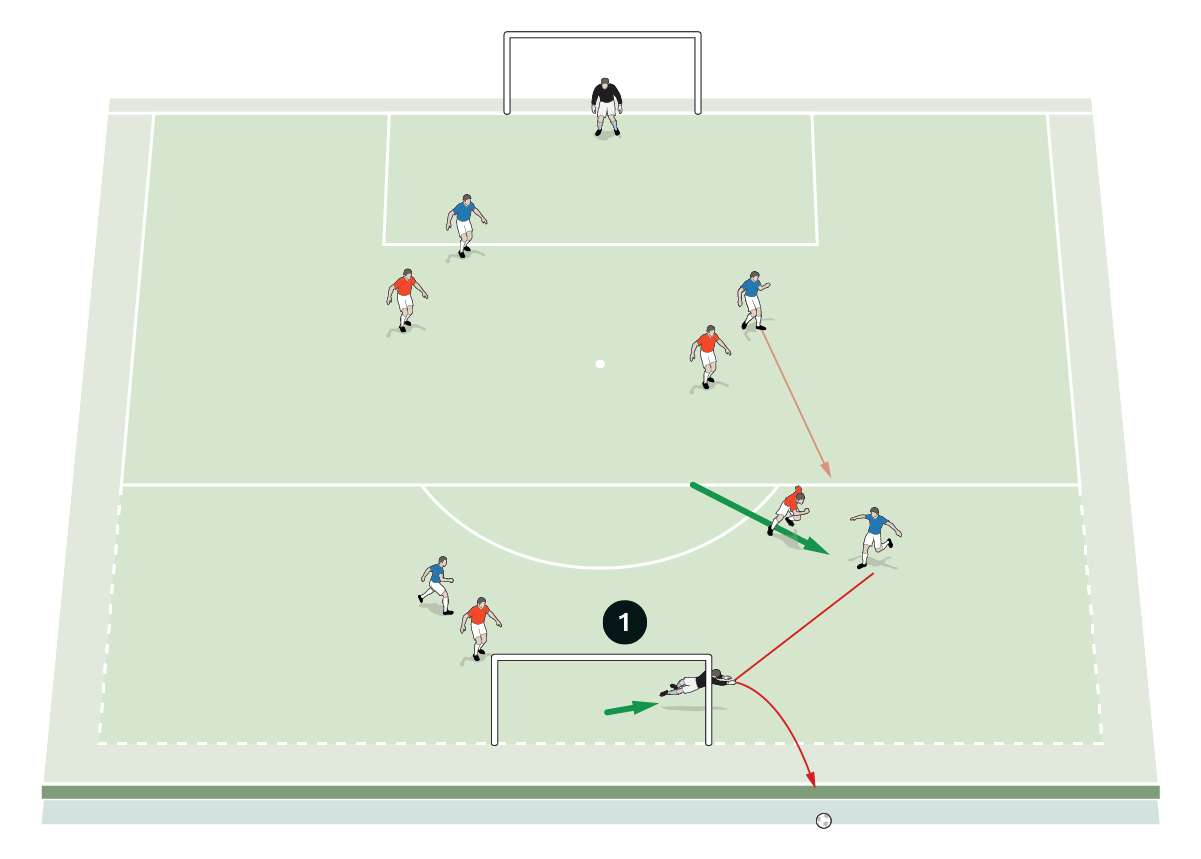
-
The target is to score in the opposition’s goal, using the free player from the goal kick
Related Files
Editor's Picks
Attacking transitions
Deep runs in the final third
Using the goalkeeper in build-up play
Intensive boxes drill with goals
Penetrating the final third
Creating and finishing
My philosophy
Pressing initiation
Compact team movement
Coaches' Testimonials

Alan Pardew

Arsène Wenger

Brendan Rodgers

Carlos Carvalhal

José Mourinho

Jürgen Klopp

Pep Guardiola

Roy Hodgson

Sir Alex Ferguson

Steven Gerrard
Coaches' Testimonials

Gerald Kearney, Downtown Las Vegas Soccer Club

Paul Butler, Florida, USA

Rick Shields, Springboro, USA

Tony Green, Pierrefonds Titans, Quebec, Canada
Join the world's leading coaches and managers and discover for yourself one of the best kept secrets in coaching. No other training tool on the planet is written or read by the calibre of names you’ll find in Elite Soccer.
In a recent survey 92% of subscribers said Elite Soccer makes them more confident, 89% said it makes them a more effective coach and 91% said it makes them more inspired.
Get Monthly Inspiration
All the latest techniques and approaches
Since 2010 Elite Soccer has given subscribers exclusive insight into the training ground practices of the world’s best coaches. Published in partnership with the League Managers Association we have unparalleled access to the leading lights in the English leagues, as well as a host of international managers.
Elite Soccer exclusively features sessions written by the coaches themselves. There are no observed sessions and no sessions “in the style of”, just first-hand advice delivered direct to you from the coach.
